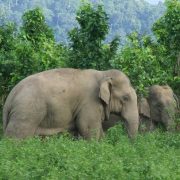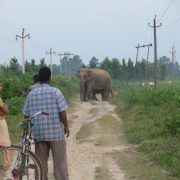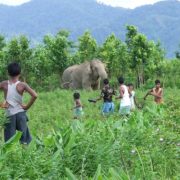The forests of Assam in northeast India provide one of the last strongholds for the endangered Asian elephant, but these forests have some of the highest levels of human-elephant conflict in the world.
Research has shown the importance of refuge sites such as forest patches and tea gardens in determining the spatial patterns of human-elephant conflict, as well as identifying critical thresholds of forest loss which lead to escalations in conflict. Deterrent measures such as electric fences, chilli fences and spotlights have been found to be highly effective.
The key to success in human-elephant conflict mitigation, however, lies not just in the efficacy of the damage control methods, but in investing considerable effort into understanding the cultural and socio-political aspects of the current situation. This allows us to work with the communities to improve livelihoods and ensure their participation in individual conservation activities and the entire process of conflict management.
OUR TEAM OF EXPERTS WORK IN SIX REGIONS AROUND THE GLOBE – REPRESENTING SOME OF THE PLANET’S MOST BIODIVERSE HABITATS. Discover more about our SCIENCE AND CONSERVATION work.



